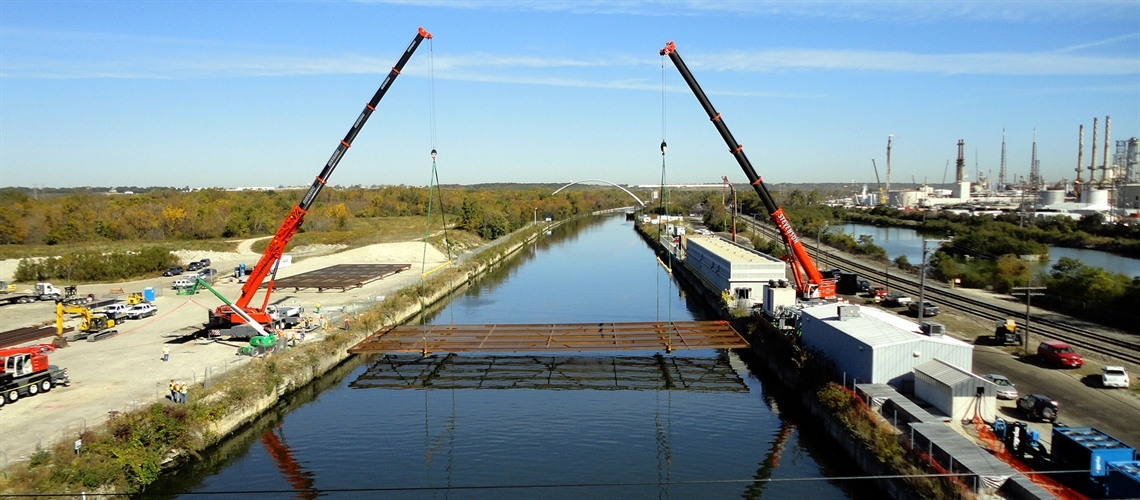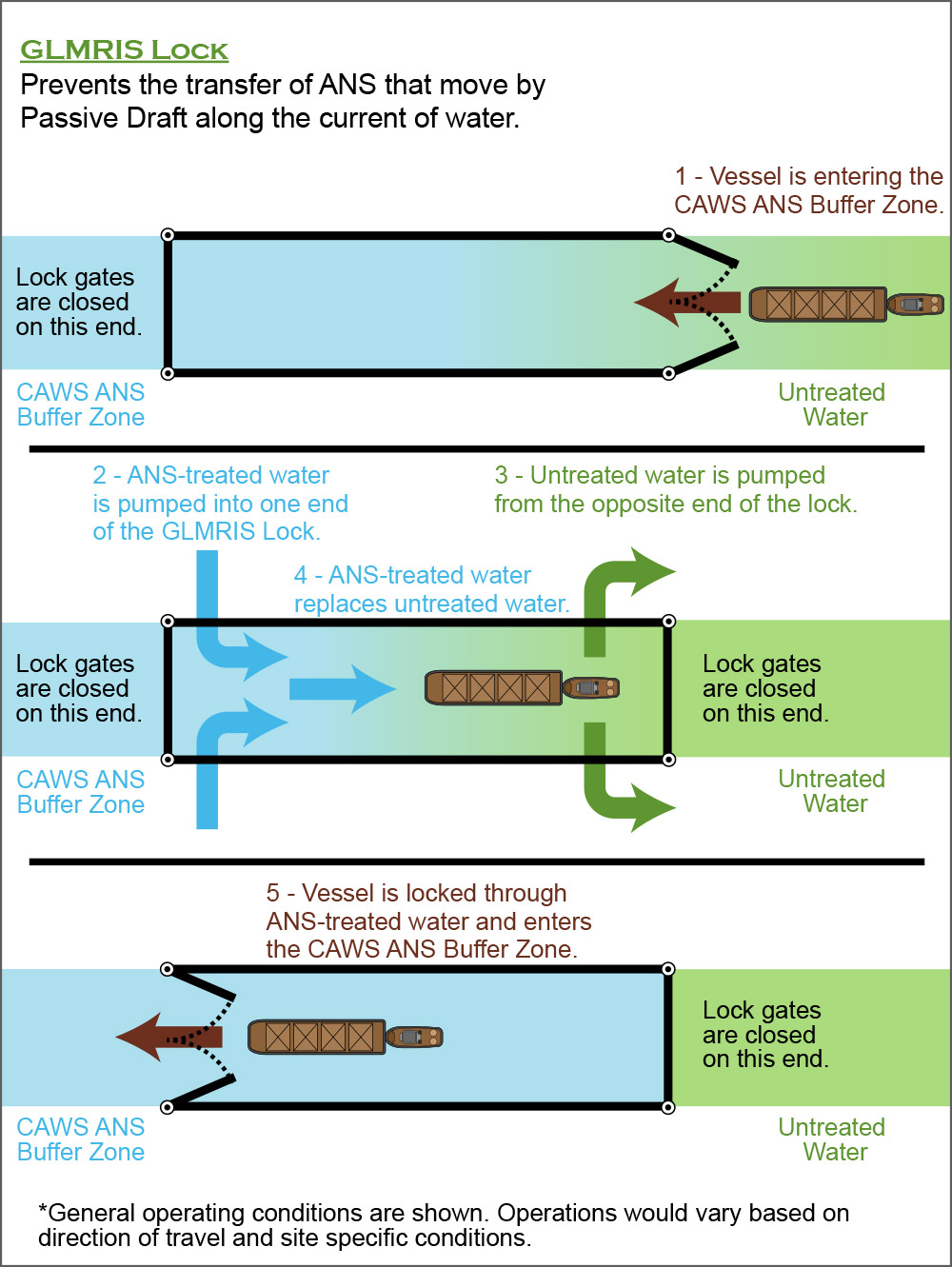Productive
2040 Goal: Revitalized and reimagined infrastructure

U.S. Army Corps of Engineers
The U.S. Army Corps of Engineers installed an electric barrier in the Chicago Sanitary and Ship canal in 2010 to help control aquatic invasive species.
The Chicago Area Waterway System will become a global model for the integrated and coordinated management and investment in traditional and natural infrastructure to effectively and efficiently move goods, manage water resources and prevent the movement of aquatic invasive species between two of the world’s largest freshwater ecosystems.

U.S. Army Corps of Engineers
This conceptual lock design, from the U.S. Army Corps of Engineers' Great Lakes and Mississippi River Interbasin Study, allows movement of boat traffic while inhibiting invasive species (or ANS, Aquatic Nuisance Species).
All of these needs will be weighed and accounted for in robust, data-driven and future-oriented decision-making processes. Cross-sector and interjurisdictional dialogue to prioritize the diverse needs of waterways infrastructure will be an ongoing and collaborative effort, encouraged by vocal city, regional and congressional support.
We must secure new appropriations for demand-driven U.S. Army Corp of Engineers projects that will strategically repair, replace, remove and reimagine our locks, dams and river banks where appropriate to ensure they serve multiple purposes and provide multiple benefits. Addressing verifiable impediments to efficient maritime movement will reduce lock delays and other known barriers to growing the market for waterborne freight. These improvements also will attract water-freight businesses to priority employment areas identified by established land use and environmental plans, policies and regulations.
Completing the Tunnel and Reservoir Plan and making complementary investments in natural stormwater solutions will eliminate combined sewer overflows in all but the most intense storms. Cutting-edge treatment would make it possible, in some locations, to return river water to Lake Michigan. River banks, where possible and prudent, would be rehabilitated to provide habitat and reduce erosion.
We will prevent current and future aquatic invasive species movement between Lake Michigan and the Mississippi River through long-term, two-way solutions in concert with investments in new or revamped navigational locks and dams.
These infrastructure investments will create many new jobs in the Chicago region, stimulating the economy and helping to maintain a healthy middle-class workforce. The benefits will be felt locally and beyond, motivating additional state and federal funding to address issues felt by multiple regions.
Making it happen
- Convene a long-term, cross-sector and interjurisdictional working group of government and non-government interests in Chicago’s rivers to develop a data-driven capital improvement plan for transportation, water resources and habitat needs. While this can be initiated right away, it may take years to secure enough resources to fully implement this proposed capital improvement plan.
- Coordinate strong congressional advocacy and action on funding waterway infrastructure needs.
- Identify existing or new revenue sources to ensure necessary local or regional cost-share for state or federal funding programs.
Key players
City of Chicago, Chicago Metropolitan Agency for Planning, Illinois Congressional Delegation, United States Congress, Chicago-area maritime stakeholders, State of Illinois, environmental organizations, Illinois River Carriers Association, MWRD, Ill. Dept. of Natural Resources, Ill. Environmental Protection Agency
Our rivers, our role
Contact your state and federal legislators to tell them you support needed investment in waterways infrastructure.
Back to goals